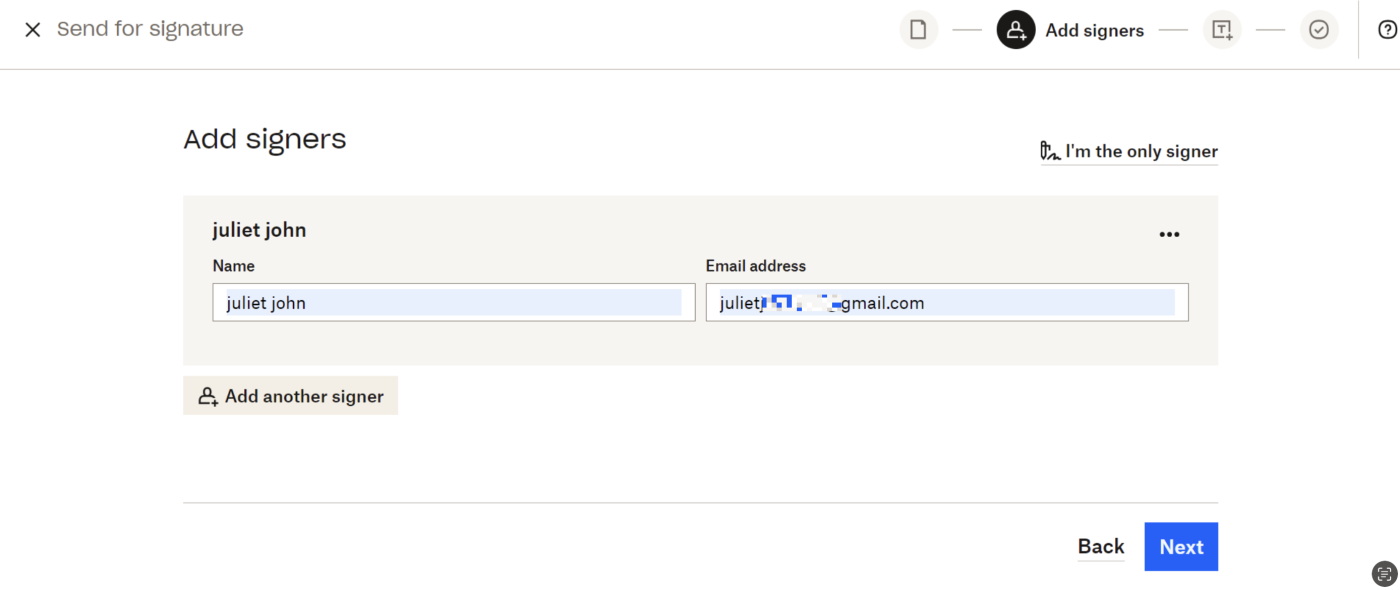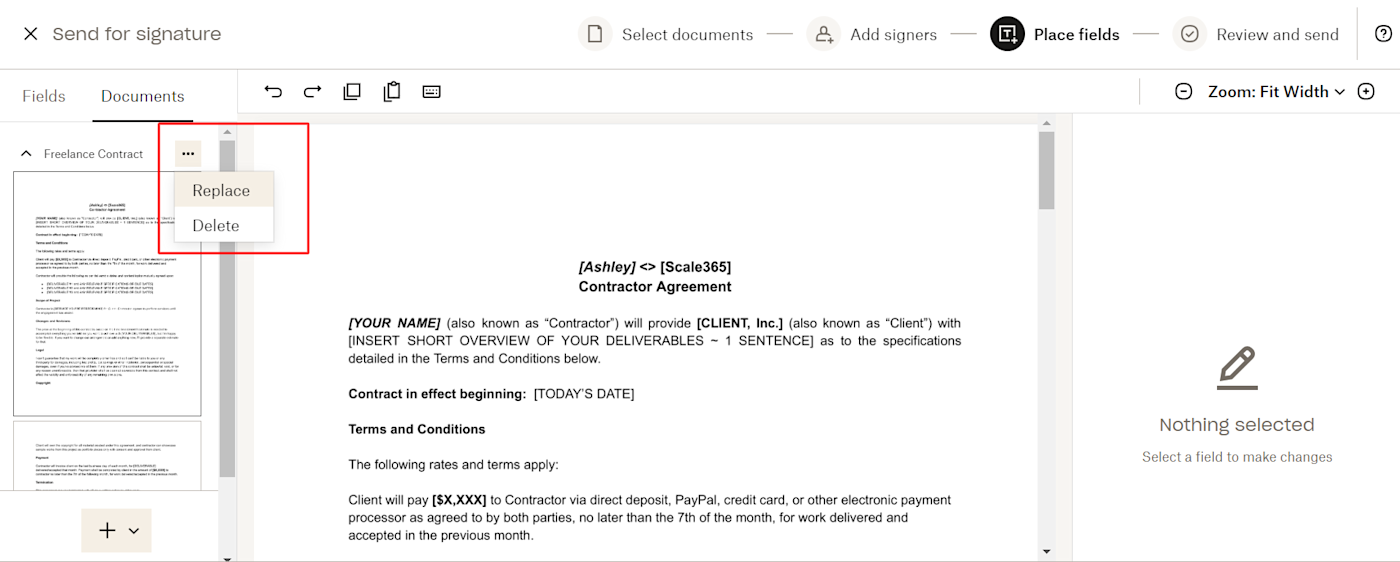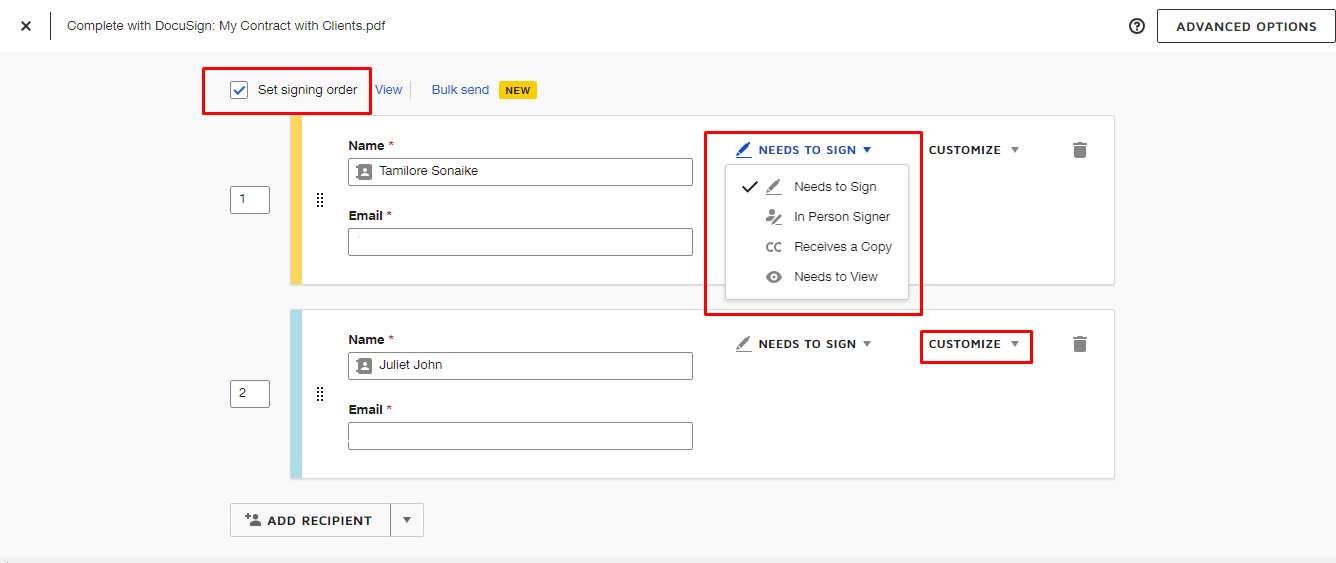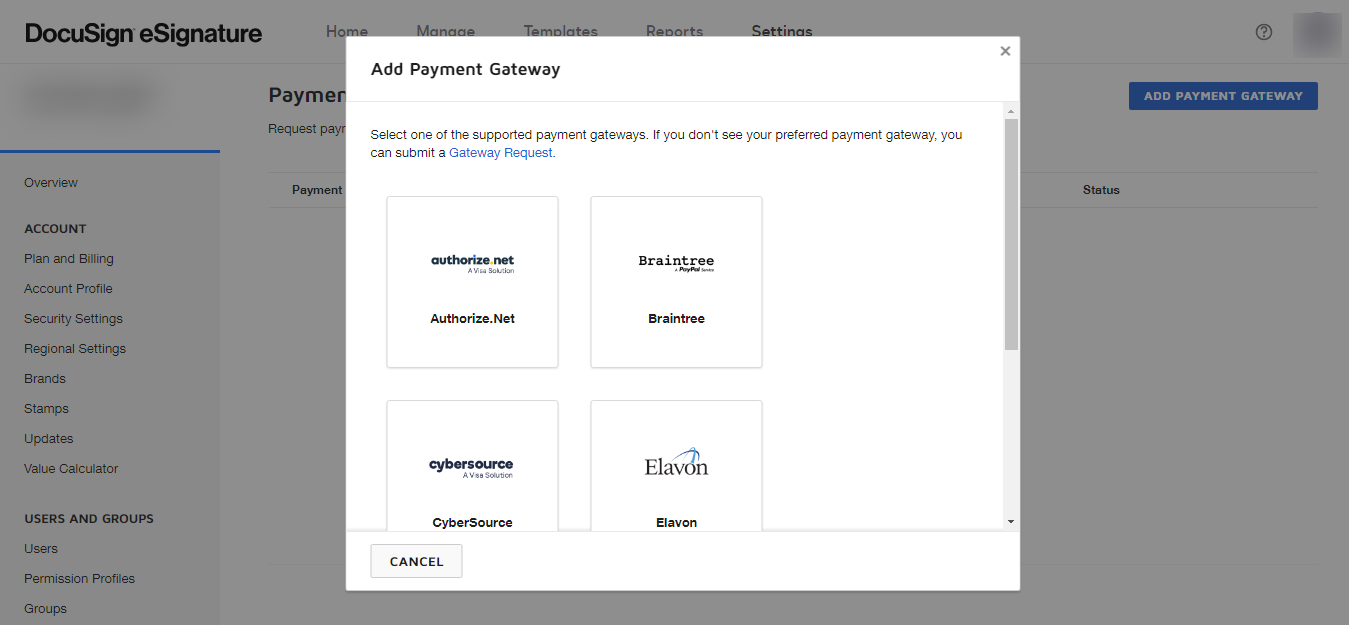When was the last time you signed something with a pen and paper? Digital signatures are the way things are moving, which is why it’s so important to have an eSignature app that you can rely on. Two of the most recognized solutions are HelloSign (now called Dropbox Sign) and Docusign.
I use HelloSign to run my business, and I’ve used Docusign many times when signing contracts with clients. While they both offer a fast and convenient way to sign documents online, there are still some noteworthy differences.
I’ve been updating this article for a couple years now, and this year, I spent even more time in each app to see how their features and workflows compare. Here’s what I discovered in the HelloSign vs. Docusign showdown.
Note: We’ll be referring to Dropbox Sign as HelloSign throughout most of the article because that’s how most folks still refer to it.
HelloSign vs. Docusign at a glance
Here’s the gist:
-
If you’re looking for a basic electronic signing tool (without many extra capabilities), HelloSign will be right up your alley. The tool gives you all the features you need to close deals quickly, save time, and sign legally binding documents.
-
Docusign, on the other hand, packs some really impressive functionalities to automate the agreement process and improve business operations for medium and large-sized organizations.
|
Dropbox Sign |
Docusign |
|
|---|---|---|
|
Ease of use |
⭐⭐⭐⭐⭐ The absence of advanced features makes it incredibly easy to use |
⭐⭐⭐⭐ Also easy to use but requires a little tinkering to get comfortable |
|
Feature set |
⭐⭐⭐ Has everything you need for basic signing, but lacks important features for teams |
⭐⭐⭐⭐⭐ Offers advanced features like document scheduling, payment collection, and more |
|
Customization |
⭐⭐⭐⭐⭐ Allows you to customize your documents with logo, background color, and text color; there’s also white-labeling option for API users |
⭐⭐⭐⭐ Allows you to customize your documents with logo, background color, and text color |
|
Security |
⭐⭐⭐⭐ Offers the basic security features most eSignature apps have |
⭐⭐⭐⭐⭐ Offers more features to ensure the safety of your documents, like locked templates and ID authentication |
|
Pricing |
⭐⭐⭐⭐⭐ A cheaper option for single users and small businesses |
⭐⭐⭐⭐ A bit pricey but still reasonable considering the advanced feature set |
|
Integrations |
⭐⭐⭐⭐⭐ Integrates with the tools you need to build a cohesive workflow (including Zapier) at the normal price |
⭐⭐⭐⭐⭐ Integrates with more apps (including Zapier) at a custom price |
HelloSign vs. Docusign: What’s the same?
Before we get into the differences, let’s look at what’s common between the two digital signature apps. Both apps:
-
Are legally binding and include a real-time audit trail
-
Offer in-person signing options on paid plans
-
Have a working mobile app
-
Include multiple languages
-
Offer bulk send on team plans
-
Include repeatable templates for documents
-
Connect to third-party apps and integrate with Zapier
Both apps are user-friendly, but HelloSign is a bit more simplified
Overall, both HelloSign and Docusign offer a smooth user experience and nearly identical eSigning workflow: upload documents, add signers, place fields, and send. But even though the workflow is the same, I find HelloSign a bit easier to use.
When preparing documents for signature requests on HelloSign, you just need to add the signer’s name and email, then complete your fields and send. The interface is straightforward with very few form fields.

With Docusign, you’ll get a busier interface and workflow, prompting you to add signers, choose an envelope type and delivery option, add messages, and even choose the frequency of reminders.

As you prepare your document inside the HelloSign editor, you can easily replace it if you discover you’ve uploaded the wrong one. All you have to do is click the horizontal ellipses (…) next to the document you’d like to replace, select replace, and choose the replacement document. And after the replacement, the field placements will stay the same if the new document is the same size or has the same number of pages as the previous one.

Docusign’s editor, on the other hand, doesn’t have this replacement option. To replace a document, you’ll have to start the document preparation process over again and reassign fields.
HelloSign is more affordable (especially for basic signing needs)
HelloSign and Docusign have similar pricing plans, but HelloSign is much more affordable for individuals and small teams.
Free plans and trials
They both offer free monthly plans that include unlimited self-signing and three signature requests. On this free plan, you can add signature fields and basic information, send to multiple recipients in one bundle, and use the audit trail to track documents in real-time. They’re both very generous, suitable for users that need to sign a few documents every few months.
That said, HelloSign allows you to test any of its paid plans for 30 days. Docusign doesn’t offer free trials on paid plans, but it has a special 30-day trial account, which you can use to learn about the tool before committing (the trial account still lacks the paid features, and you’ll have to sign up using a special link to access it).
Paid plans
After the free introductions, HelloSign is cheaper for the basic features most businesses need for eSigning.
The main distinction between the two entry-level plans ($20/month for HelloSign and $15/month for Docusign) is that HelloSign includes unlimited digital signature requests every month, where Docusign limits you to five. That’s a pretty stark difference.
To unlock Docusign’s unlimited signature requests, you have to buy one of the team plans, Standard or Business Pro, which start at $45 and $65/user/month, respectively. HelloSign has a cheaper team plan starting at $30/user/month.
Also, since Dropbox acquired HelloSign, the platform offers a bundle deal—Dropbox Essential—that combines the features of Dropbox’s individual plans with eSigning capabilities for $19.99/month.
The difference in pricing is clear. If budget is a big factor for your business, then you already have your answer. HelloSign offers all the basic features you’ll need at a lower price.
Docusign is better for teams
It makes sense why HelloSign is cheaper: its feature set is very limited compared to Docusign.
Docusign gives teams access to robust features like delegated signing, custody transfer, insightful reporting, and options for providing signers with a more professional signing experience, like conditional fields, dropdowns, approval buttons, and read-only permissions.
When sending documents, you can use collaborative commenting to ask and answer questions within agreements. Set signing order, specify who views a document or receives a copy, and use pre-filled doc fields and automated routing to save time. You can even automate post-agreement actions like archiving documents and exporting data to CRM.

Docusign also gives you more options to ensure the security of your documents, especially when managing multiple users. For instance, administrators can lock templates to limit changes to messaging, branding, and even recipients. You can even ask signers to verify their identity in multiple ways, like ID verification and knowledge-based authentication. You’ll find these advanced features impressive—and even necessary—if you’re an enterprise-level organization.
On top of all these, Docusign allows you to instantly collect payments after a document is signed. The tool connects to payment gateways like Braintree, Stripe, Authorize.net, and more.

To be fair, HelloSign’s team plans aren’t totally lagging here. They offer important features like signer authentication with access codes, signer attachments, and in-person signing. But the few advanced features that are similar to Docusign’s—like document dropdowns and signer reassignments—are locked behind their premium plan, and you have to speak to sales for a custom quote in order to access them.
Both apps integrate with Zapier (but Docusign has more native integrations)
Both apps provide basic integrations to platforms like Google, Dropbox, and Microsoft on all plans. But when it comes to more robust integrations, they offer very different capabilities: Docusign has over 900 native integrations, while HelloSign has just over 20.
With HelloSign, you can connect to enterprise-grade platforms like HubSpot, Salesforce, Microsoft SharePoint, and Oracle, to streamline the agreement workflow across your organization. These integrations are available on the Standard plan for $30/user/month.
Docusign, on the other hand, locks the majority of its robust integrations behind its enhanced plan. This means you can’t connect to CRM providers unless you speak to sales for a custom quote. But it does connect to more work and productivity tools than HelloSign (think: Zoom and Stripe).
Having said that, both eSignature platforms integrate with Zapier, so you can connect them to thousands of other apps and automate routine processes.
Automate HelloSign (now Dropbox Sign)
Dropbox Sign’s Zapier integration lets you kick off workflows from other apps, so you can automatically send signature requests from anywhere, or start workflows based on actions you take in the app. Here are a few pre-made templates to get you started.
Automate Docusign
When you connect Docusign to Zapier, you can automate signature requests and upload newly signed envelopes to cloud storage—among many other possibilities. Check out some ideas for automating Docusign with Zapier, or try one of these pre-made workflows.
Zapier is a no-code automation tool that lets you connect your apps into automated workflows, so that every person and every business can move forward at growth speed. Learn more about how it works.
HelloSign vs. Docusign: Which should you choose?
Both HelloSign and Docusign are excellent eSignature platforms with similar workflows and outputs, but in the end, they’re ideal for different use cases. HelloSign is easier to use and more affordable, especially for single users and small businesses. But Docusign offers advanced features that make agreement processes easier and better for bigger teams.
Related reading:
This article was originally published in September 2022 by Brittney Thompson. The most recent update was in July 2024.